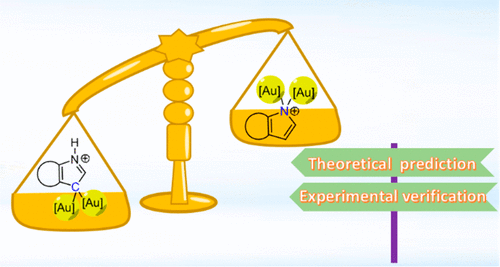Bonded to Carbon or Nitrogen? This is a Question on the Regioselectivity in Hyperconjugative Aromaticity

In chemistry, regioselectivity is the preference of one direction of chemical bond making or breaking over all other possible directions. Although it has been extensively investigated in various reactions, the regioselectivity of hyperconjugative aromaticity on either main group systems or transition metal ones remains elusive due to the challenge of synthesizing the target products. Here we report a joint theoretical and experimental study on this issue. Theoretical calculations predicted that electron-withdrawing groups prefer an attachment to the sp3-hybridized carbon atom rather than the nitrogen atom in indoliums. For the electron-donating groups, the two isomers bonded to the sp3-hybridized carbon or nitrogen atom are almost isoenergetic. When both sp2- and sp3-hybridized carbon and nitrogen atoms in the five-membered ring of indoliums are considered, the isomer with the polyaurated substituents bonded to the sp3-hybridized carbon atom is thermodynamically more stable than that with the polyaurated substituents bonded to the sp3-hybridized nitrogen atom. This prediction is reasonably verified by experimental observation. Bond dissociation energy is found to be more important than aromaticity in rationalizing such a preference. Our findings could help experimentalists to design and realize more novel hyperconjugative aromatics.
https://pubs.acs.org.ccindex.cn/doi/abs/10.1021/acs.joc.8b02996
